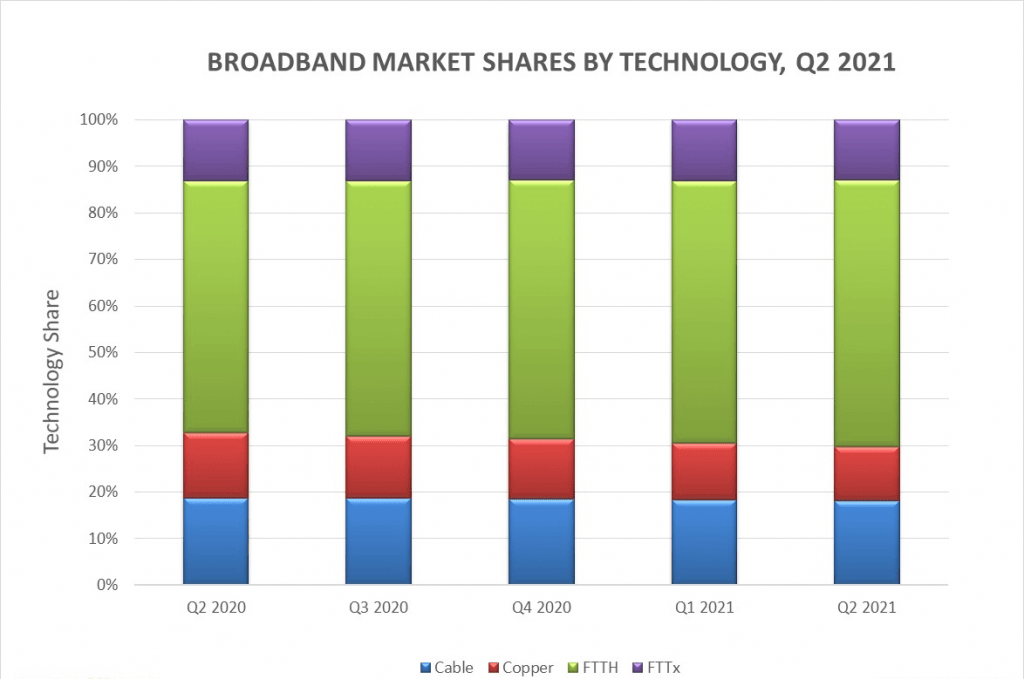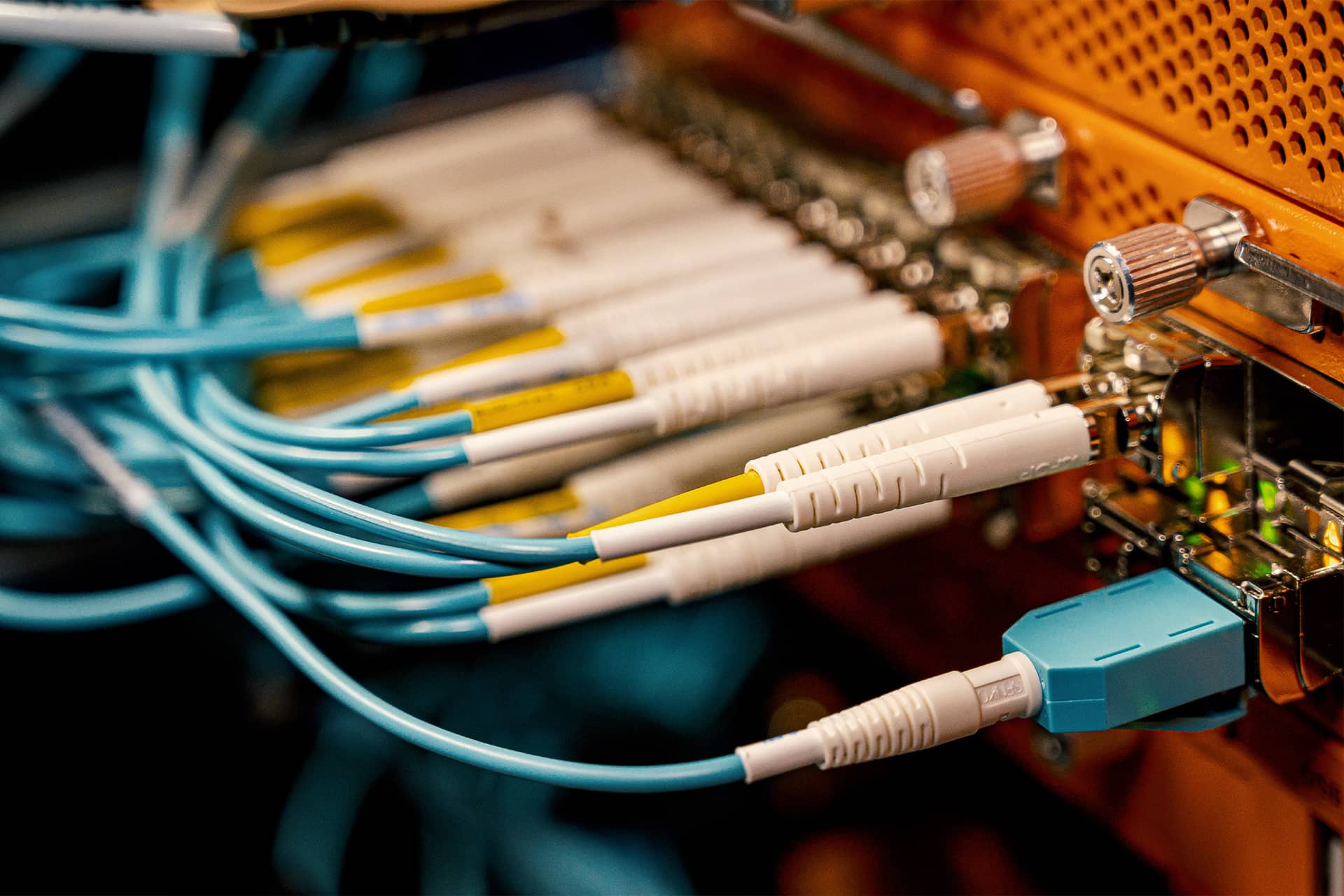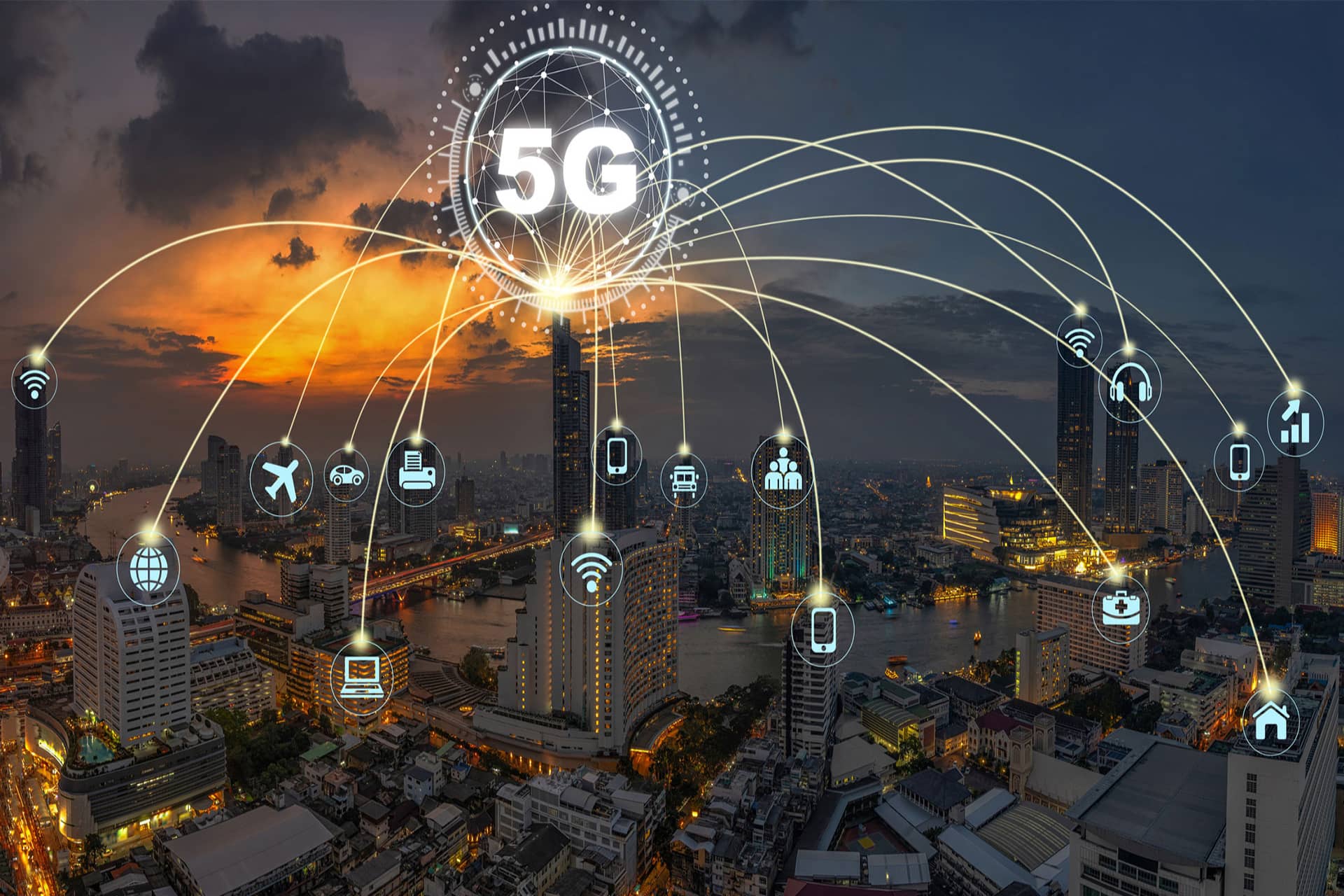FTTH at a glance
There has perhaps never been a time of more urgent need for superfast connectivity than today. As the third decade of the 21st-century rolls on, we can confidently say that there are more connected devices in the world than there are people. 21.5 billion devices in 2021, to be precise.
And we’re not just using them to surf the internet anymore. They have paved the way for face calls from phone calls. Thanks to smart devices, meetings today imply video conferences. And there are more such examples. ‘Going to the office’ is steadily becoming ‘working from home. Video game opponents are less your siblings and more random strangers from Estonia, Argentina, or South Korea. So, the question is, what is the fastest way to connect them all at present?
The answer, experts say, is FTTH. Yes, that’s the rather cool abbreviation for Fibre to the Home or Fibre to the Home, whichever you prefer. Essentially, FTTH is the delivery of superfast communication signals via optical Fibre (OFC cable) to a home or a business centre. In a nutshell, it is a much faster connectivity option than the erstwhile copper cables. How fast?
You’ll find the answer to that and more in our comprehensive blog on Fibre to the Home (FTTH), like:
Evolution of fibre to the home (FTTH)
Fibre deployments have evolved to meet the requirements of modern-day technology. The share of FTTH connections in fixed broadband connections has grown over the years and stands at 57.3% as of 2021.
Nulla in tristique nibh. Phasellus porttitor leo id risus commodo cursus. Aliquam tincidunt rutrum ante, eu vestibulum elit pharetra in.

But like every other thing FTTH had modest beginnings. The evolution of FTTH networks goes back to the 1970s when Dr Schultz, Keck and Maurer performed an experiment with fused silica. The fibre developed by them had 65000 times more potential than copper cables.
Today, half a century after the life-changing discovery fiber to the home has become one of the primary modes of internet connectivity globally. 20 countries have achieved a penetration rate of more than 50%. UAE is the global leader with a penetration rate of 97% followed by Singapore.
Growth in FTTH networks over the years is attributed to economic and social benefits associated with the technology. The value-added services delivered by FTTH improve the quality of life by connecting people with high-speed internet.
How Fibre to the Home (FTTH) works?
To understand how Fibre to the Home (FTTH) works, it is important to understand how an OFC i.e., an optical Fibre cable works. In essence, an OFC carries light signals to transmit data across the length of the network. This is different from regular twisted or coaxial cables which carry electrical impulses to deliver data. Since optical signals are faster and not affected by noise, cross-talk or other interference, an FTTH network can deliver uninterrupted Fibrenet internet over much larger distances.
For long, OFC cable has been utilised in the backbone network i.e., the parent network that connects data centers and telephone switches. In an FTTH network, FTTH cables are deployed for last-mile connectivity to residences and office premises as well. That has only been made possible due to a steady decline in prices of optical Fibre as well as FTTH equipment.
Let’s make a sort of map of the FTTH network to understand how it works. You will come across various terms such as CO, ODN, CPE, and more.
Essentially, a Fibre optic network is used to deliver triple reproduction services i.e., voice, video and data. Everything from high-speed Fibre cable internet, video on demand, HDTV, and VoIP to MPEG video, pay-per-view and RF video can be delivered deep into the customer premises with FTTH (or FTTp).
The Video Headend and the Internet feed content into the CO (Central Office) or the PoP (Point of Presence) of an FTTH operator. Thereafter, the CO converts the content from an electrical signal to optical pulses that travel via an Optical Distribution Network (ODN) to the terminal at a subscriber’s home over an Optic Fibre cable. At the subscriber’s home, a Customer Premise Equipment (CPE) reverts the optical signal back into an electrical one that is picked up by the router. And voila!
The types of services that can be offered via the FTTH network include VoIP, lifeline POTS, RF video, MPEG video, IPTV, HDTV, video on demand, pay-per-view, high-speed Internet and several other services.
Fibre to the home architecture and components
Before understanding the implementation of FTTH it is important to understand the entire architecture behind the network. The FTTH architecture is made up of :
- Optical distribution frame (ODF)- It performs the role of providing cable interconnections between communication facilities.
- Passive optical splitter- The fibre and its signal is split by the passive optical splitter. It performs the role of splitting an incident light beam into two or more light beams.
- Fiber distribution terminal- The terminal connects the feeder cables and the distribution cables.
- Fiber access terminal– It facilitates the distribution of fibres and provides various types of connections.
- Fibre terminal box- Outdoor fibre terminal boxes are weatherproof enclosures used to transport fibres for FTTX networks.
- Optical splitter box- The optical splitter is connected to the fibre in this box.
- Optical network unit/terminal- It acts as the intermediary between fibre optic cables and other wiring cables like phone cables and ethernet.
The network architecture of FTTH is of types namely active optical network (AON) and passive optical network (PON). The two use different configurations of the components to suit the requirements.
Source: Mirakhur, V. (2022) Let’s discover fibre to the home (FTTH), STL Blog. Available at: https://www.stl.tech/blog/ftth/ (Accessed: October 11, 2022).









